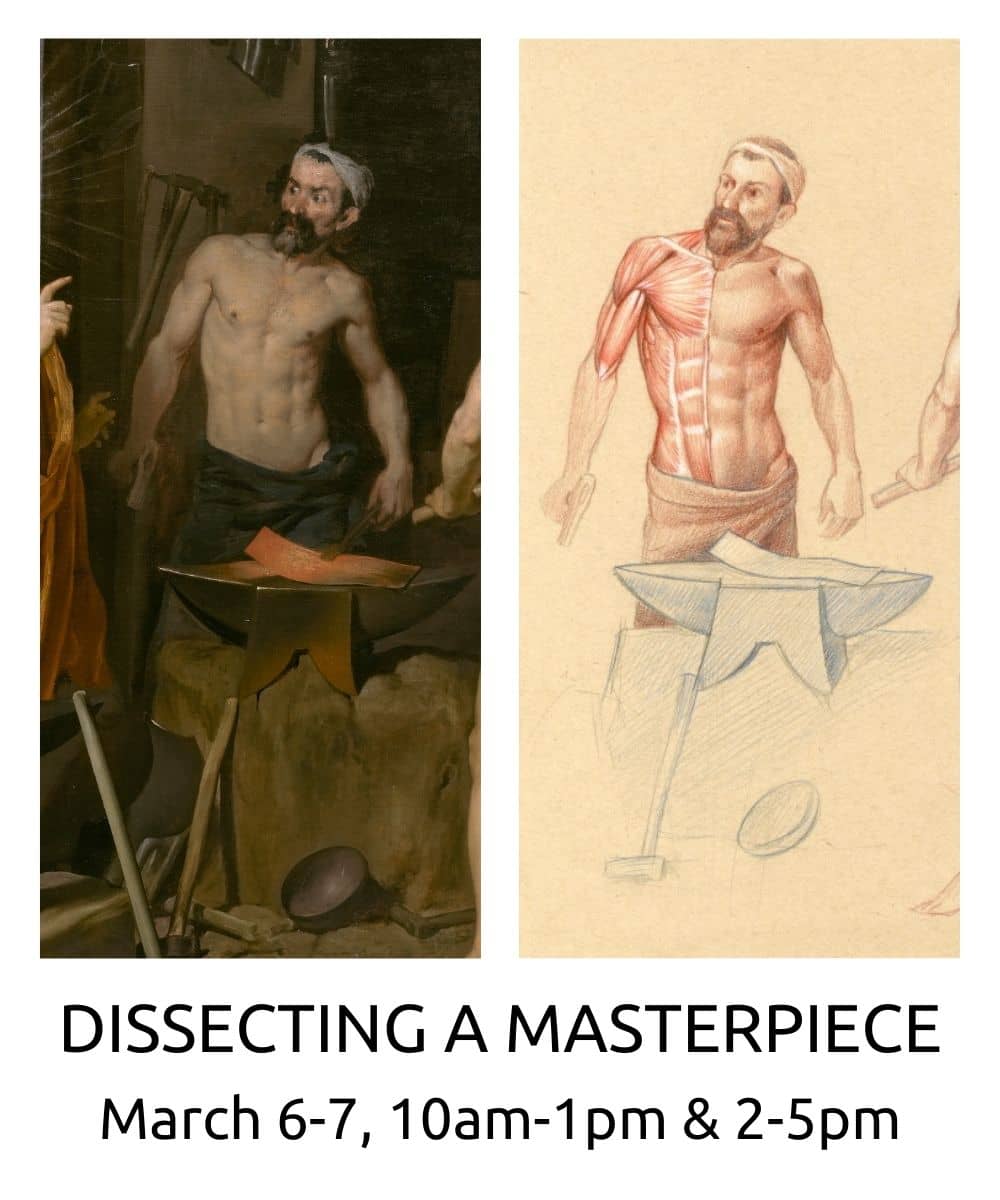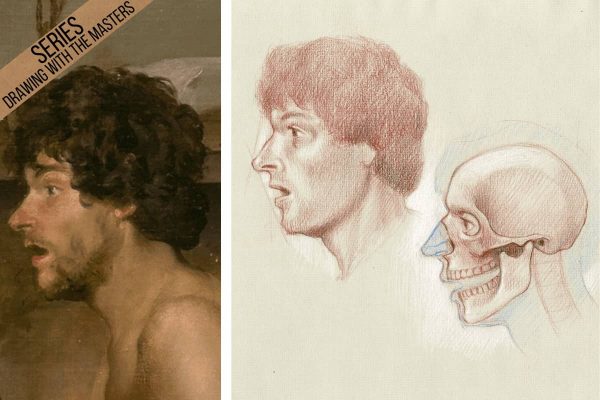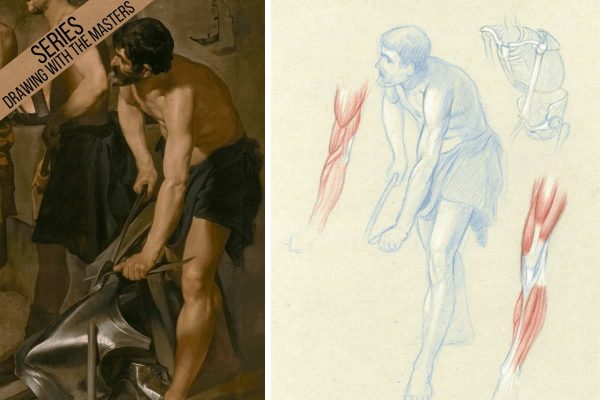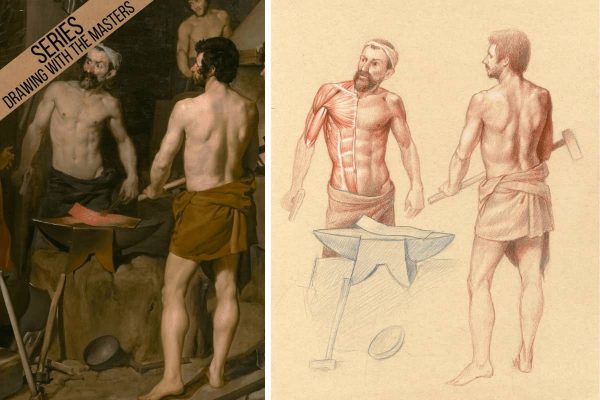Online Workshop: Dissecting a Masterpiece
Drawing analysis of Velazquez’s “Apollo in the forge of Vulcan”
This workshop continues the series “Drawing with the Masters” focusing on the Florentine structural method and the traditional use of Anatomy in the Fine Arts
“Did the Renaissance Artists really follow the method prescribed by Leon Battista Alberti for drawing the human figure?”.
This question often comes up in my Figure Anatomy classes.
Alberti advised the artists to study Anatomy and, when drawing the figure, start with the skeleton, add the muscles, then the fat and skin and eventually the clothes, in order to obtain solid, expressive and realistic human figures.
Take a look at these images, one by Michelangelo, one by Raphael and one by Bartolomeo Passerotti, Artist and Anatomy teacher in 16th century Bologna.
This question often comes up in my Figure Anatomy classes.
Alberti advised the artists to study Anatomy and, when drawing the figure, start with the skeleton, add the muscles, then the fat and skin and eventually the clothes, in order to obtain solid, expressive and realistic human figures.
Take a look at these images, one by Michelangelo, one by Raphael and one by Bartolomeo Passerotti, Artist and Anatomy teacher in 16th century Bologna.
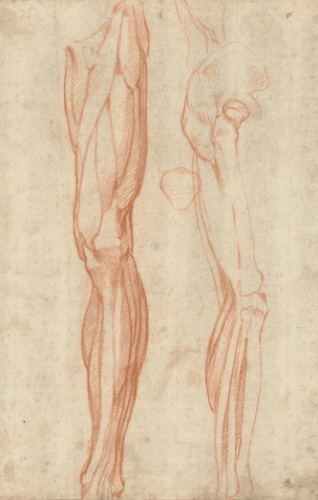
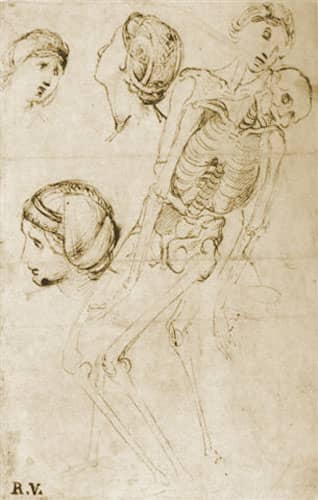
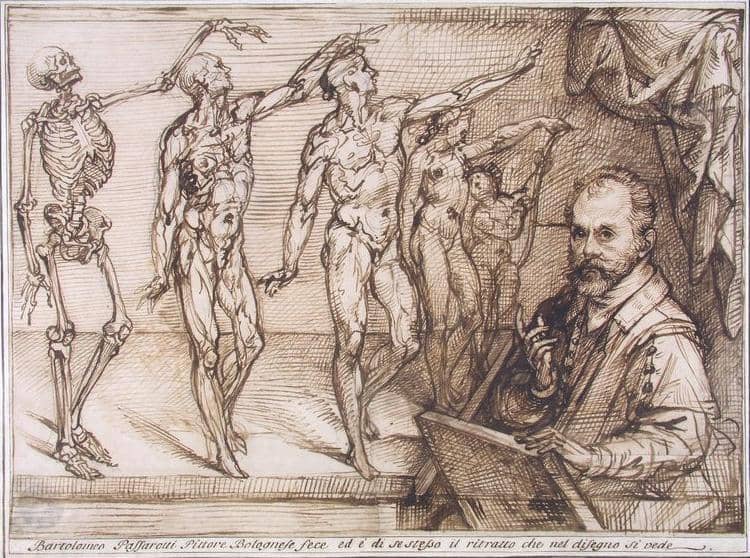
This two-day workshop is based on this method, devised during the Renaissance, that revolutionized the way the human figure will be represented for the next 5 centuries.
Velazquez’s masterpiece “Apollo in the Forge of Vulcan” will be our inspiration that will take us back in time to study and practice Anatomy, Figure anatomy and Figure drawing, prepare a number of drawings and studies of the human anatomy, practice figure drawing techniques, expand our anatomical knowledge and appreciate the compositional aspects of this masterful work.
“Apollo in the forge of Vulcan” is an incredible masterpiece of composition, painting technique and display of anatomical knowledge.
During this weekend long workshop, the students will have occasion to practice figure drawing in various techniques, discuss the compositional construction of this work and study the superficial anatomy by drawing flayed renderings of three of the painting figures from front, back and side view, improving drawing skills and anatomical knowledge.
Materials
Drawing paper: a pad of Strathmore Drawing, series 400, 12” by 18” or 11” by 14” or Strathmore Bristol vellum surface series 300, 11” by 14”; Strathmore charcoal paper toned, 12” by 18”. You can also use or experiment with any other brand and type of paper you like or have: Canson, Fabriano, etc. or buy paper by the sheet.
Compressed Charcoal in sticks and pencils. General's is a good and cheap brand. White chalk in pencils or sticks, General's again makes a very good and cheap chalk pencil. Vine charcoal in square sticks, preferably Nitram in soft and medium gradation (B and HB). Graphite pencils in HB-2B-4B gradations will suffice.
Blending stump, erasers (mars plastic, kneaded eraser, Chamois, General’s Factis mechanical eraser or Tombows Mono Zero mechanical eraser.
Red, black and white Conte crayon pastel or colored pencils. The red should be an earth red such as Venetian red or Indian red. And finally, sharpening tools and sand paper.
